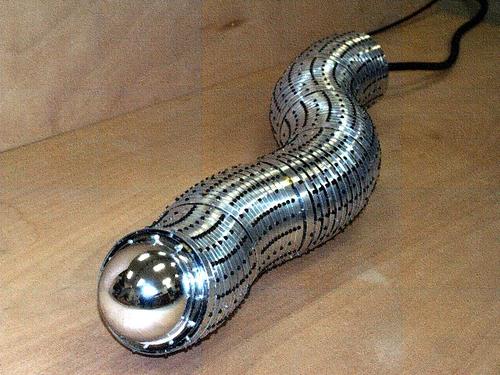Slideshow: Robotic Snakes & Worms Get Under Your Skin
The majority of robots modeled after snakes and worms are designed for rescue and medical operations.
February 5, 2013
Although it seems like robots modeled after snakes and worms could be used for a wide variety of applications, the majority are designed for only two uses.
Many are created as rescue robots -- for detecting danger or victims or for taking supplies to survivors. Their shape, size, and locomotion style give them access to places people can't or shouldn't go, such as collapsed buildings and nuclear reactors that are damaged or being decommissioned.
The other main use for snake and worm robots is in medical applications. Skinny, snaky tubes are just right for inserting into blood vessels or abdominal cavities to assist in minimally invasive surgery. Or they can go exploring to locate problems such as tumors and send back data about size and location.
Click the image below to see 10 examples of these writhing robots.

The Slim Slime Robot from the Tokyo Institute of Technology's Hirose Fukushima Lab is a pneumatically driven active cord mechanism. It is used to inspect pipes in chemical laboratories or nuclear plants, detect unexploded mines, and help first responders find victims in collapsed buildings. A series of six connected modules are driven by pneumatic actuators. Compressed air is forced from the main tube of each module into that module's bellows, or flexible pneumatic actuators, which are located along the main tube's length. The Slim Slime can creep like a snake, make pivoting turns, roll laterally, and move with a pedal-like motion that emulates snails and limpets. Its total length is 730-1,120mm (28.7-44 inches). It weighs 12kg (26.4 pounds),
and its top speed is about 60mm (2.36 inches) per second.
(Source: Hirose Fukushima Lab)
Related posts:
{doclink 256965}
{doclink 256841}
{doclink 256018}
{doclink 255649}
{doclink 254560}
{doclink 252291}
{doclink 251209}
{doclink 250773}
{doclink 249665}
{doclink 247655}
{doclink 247668}
{doclink 246357}
{doclink 246206}
{doclink 244543}
{doclink 244549}
{doclink 242527}
{doclink 241424}
{doclink 240513}
About the Author(s)
You May Also Like



